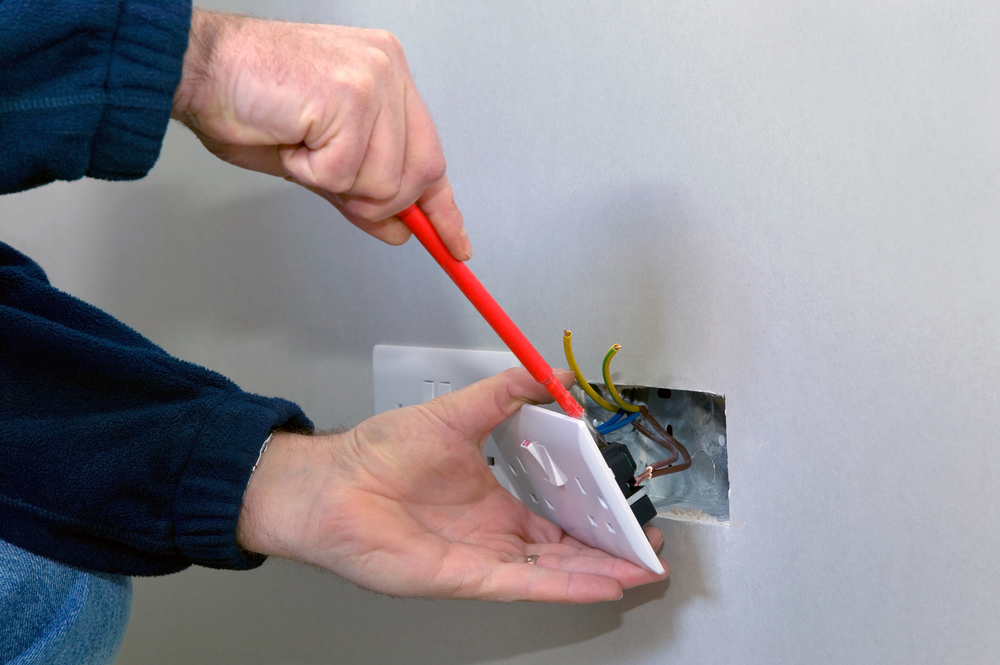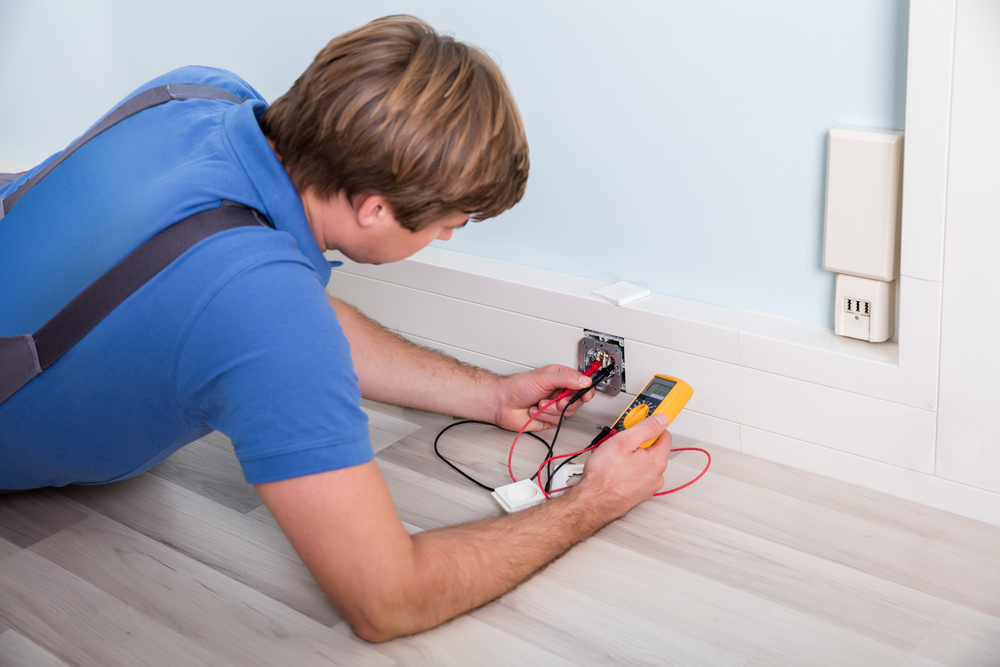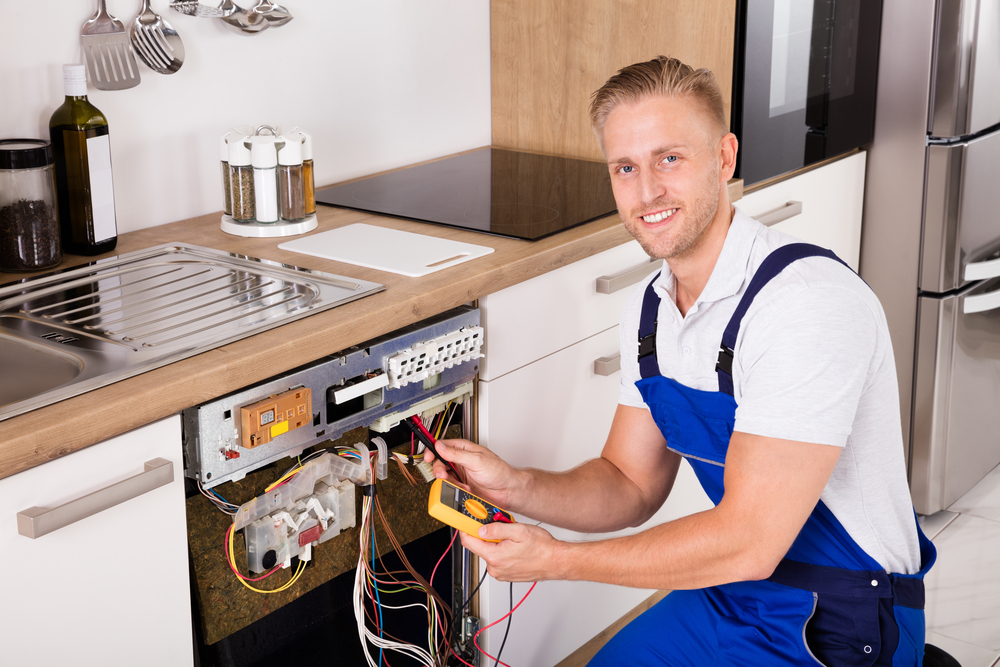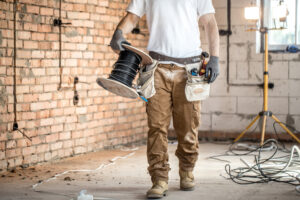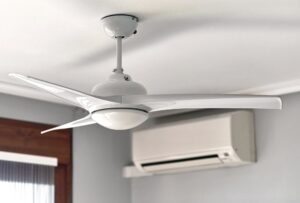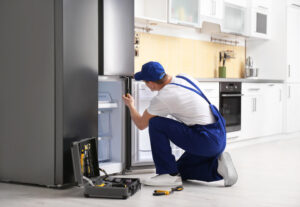When to Schedule an Electrical Safety Inspection
It’s advisable to conduct an electrical safety inspection in the following situations:
- Property transactions: An inspection can help identify potential hazards and ensure the electrical system is in proper condition before purchasing or selling a property.
- Home renovations: Before undertaking a significant renovation or adding new appliances, an inspection can help identify existing issues and prevent them from becoming costly repairs.
- Routine maintenance: A regular electrical inspection is recommended every 25 years to prevent short circuits due to deteriorated wiring.
Timely scheduling of an electrical safety inspection can save costs and provide peace of mind. You can protect your home and loved ones from harm by identifying potential hazards before they escalate into dangerous situations. Regular inspections also help ensure your home’s electrical system remains up-to-date and compliant with safety standards.
Buying or Selling a Property
Conducting an electrical safety inspection when buying or selling a property can help to identify potential hazards. A qualified electrician is essential in such inspections, as they are responsible for carefully examining the property’s electrical system to identify any potential safety issues and provide a comprehensive report on the condition of the electrical installation. This inspection helps guarantee that the electrical circuits and equipment are in proper condition and not overloaded, assisting the buyer in understanding the safety of the property.
Conducting an electrical safety inspection during a property transaction is a prudent decision. It can reveal potential hazards that may impact the property value or require costly repairs, and it ensures that the home’s electrical system is safe and compliant with safety standards. By identifying and addressing potential hazards, you can protect your investment and provide a safe environment for your family.
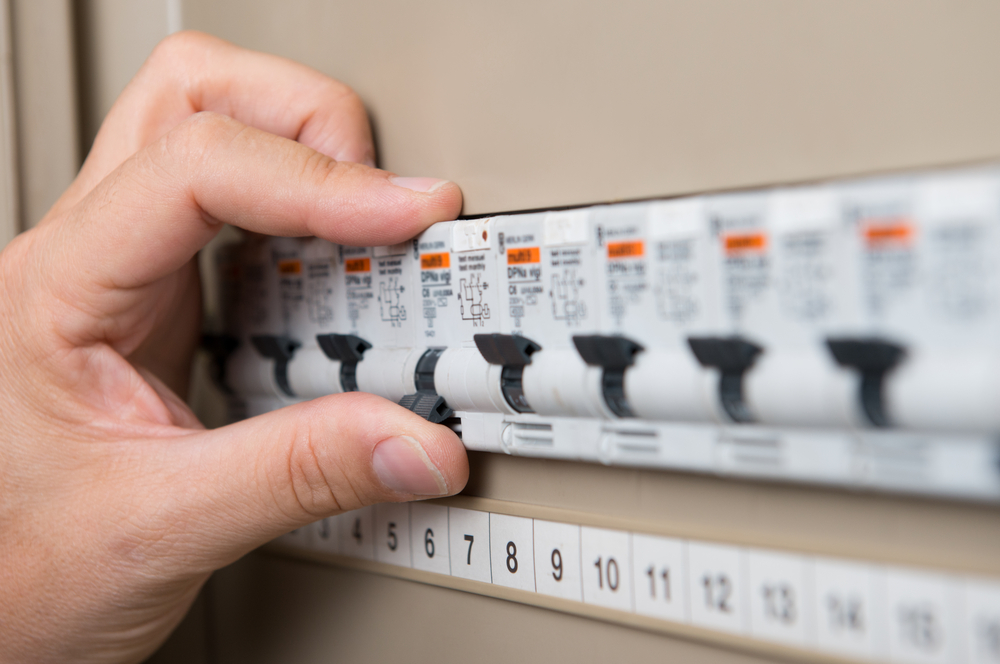
Home Renovations and Upgrades
Arranging for an electrical safety inspection during home renovations and upgrades is important for confirming compliance with safety standards and averting potential risks. An inspection can reveal:
- Outdated or unsafe wiring
- Poor or defective wiring
- Overloaded power outlets
- Exposed electrical components that may pose risks during the renovation process
It can also help identify necessary updates to the electrical system to accommodate new appliances or changes to the home’s layout.
By having a thorough electrical safety inspection performed by a trained professional before beginning any major renovations or upgrades, you can ensure the safety of your electrical system and prevent potential hazards. This will help ensure a smooth renovation process and protect your home and family from harm.
Regular Maintenance and Inspection
Routine electrical maintenance and inspections ensure a safe home and prevent potential dangers. By conducting regular inspections, you can identify potential hazards and address them promptly, preventing them from becoming expensive issues. Obtaining a routine electrical inspection every 25 years or so is recommended, as wiring can deteriorate and lead to short circuits.
Regular inspections help reduce the potential for electrical fires, identify potential hazards, and ensure the electrical system functions optimally. Being alert and proactive with your home’s electrical maintenance can safeguard your family and property from any harm.
Preventative Measures: Reducing Electrical Risks at Home
Preventative measures play a key role in minimizing electrical risks at home. Here are some steps you can take to ensure a safe home environment:
- Ensure the safe use of electrical devices and appliances.
- Regularly test smoke alarms and safety switches.
- Seek professional help for electrical repairs.
These precautions protect your home and loved ones from potential hazards and maintain a safe living space.
Recognizing the significance of preventative measures and integrating them into your daily routine can notably lessen the chances of electrical accidents and fires. Proper maintenance, regular inspections, and adherence to safety guidelines can create a secure and comfortable home environment for your family.
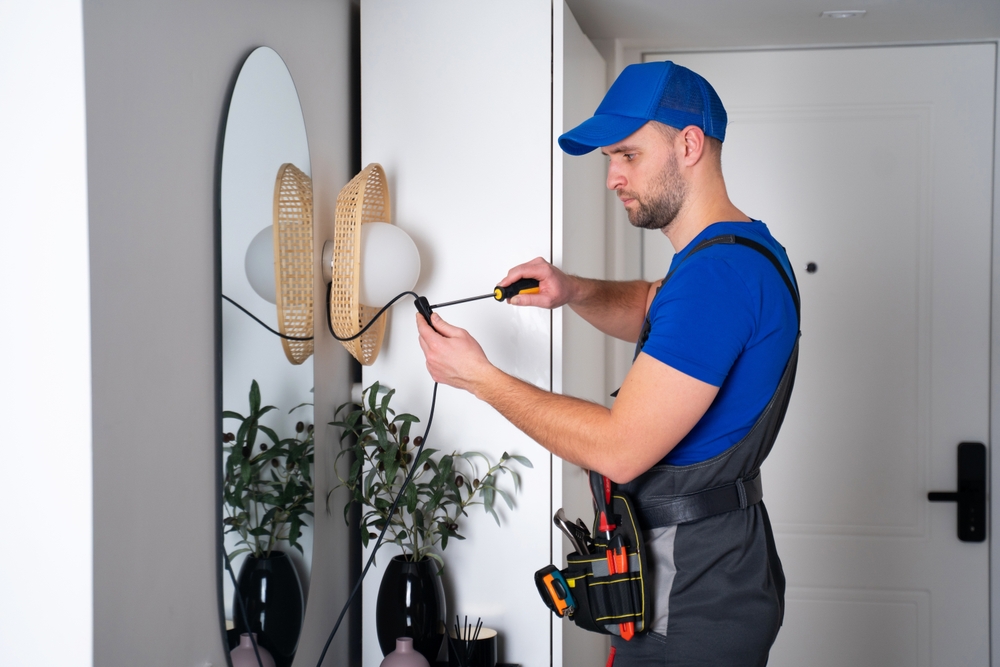
Safe Use of Electrical Devices and Appliances
To ensure the safe use of electrical devices and appliances, following the manufacturer’s instructions and guidelines for proper use and maintenance is important. Moreover, keep appliances away from water and moisture to prevent electrical shock, and avoid using appliances with wet hands or in wet conditions. Educate and supervise family members on the correct usage of appliances and maintain a safe distance between appliances and combustible materials.
In addition to following these safety tips, it is essential to inspect cords and plugs regularly for any damage or wear and replace them if necessary. By taking these precautions, you can minimize the risk of electrical accidents or fires and ensure a safe home environment for your family.
Regularly Testing Smoke Alarms and Safety Switches
Frequent testing of smoke alarms and safety switches is vital for confirming their proper functioning and safety. Here are some guidelines for testing:
- Smoke alarms should be tested at least once every 12 months.
- Conduct a more thorough test every six months by pressing the test button until the alarm sounds.
- Safety switches should be inspected every six months to guarantee optimal performance and safeguard against electrocution.
By regularly testing smoke alarms and safety switches, you can ensure these essential safety devices function correctly and provide the necessary protection for your home and family. Regular testing helps you stay compliant with safety standards and avoid potential hazards.
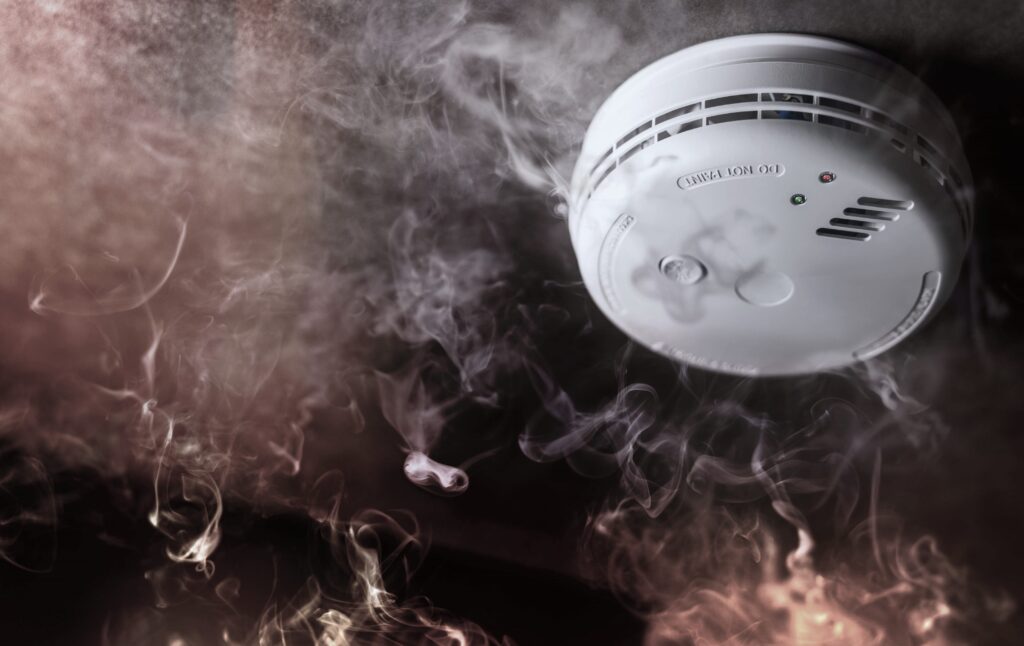
Seeking Professional Help for Electrical Repairs
Enlisting professional assistance for electrical repairs is vital for confirming compliance with safety standards and averting potential risks. DIY electrical repairs carry several risks, such as:
- electric shock
- electrical fires
- injuries and fatalities
- damage to electrical equipment
By employing the services of a licensed electrician, you can ensure the safety, efficiency, and expertise needed to handle electrical work.
Licensed electricians have the necessary knowledge and experience to handle electrical work safely, thus saving time and ensuring that repairs are done correctly. Additionally, they can identify potential hazards and recommend necessary repairs or upgrades to ensure home safety. Seeking professional help for electrical repairs is a wise investment for maintaining a safe home environment.
Cost and Benefits of an Electrical Safety Check
Although the cost of an electrical safety check can vary based on property size, location, and the scope of required repairs or updates, the benefits greatly surpass the costs. Regular electrical safety inspections can help prevent hazardous occurrences, such as:
- electric shocks and burns due to malfunctioning or impaired electrical equipment
- accidents caused by working with electricity on construction sites
- electrical fires and property damage
- guarantee the secure operation of electrical appliances and equipment
- lessen the risk of electric shocks and electrocution
- meet government regulations and safety standards
Investment in regular electrical safety checks offers the following benefits:
- Ensures home safety
- Contributes to long-term financial savings
- Identifies potential hazards and addresses them before they escalate into costly repairs
- Protects your home and loved ones
- Maintains a safe and comfortable living environment.
Estimating the Cost of an Electrical Safety Inspection
The cost of an electrical safety inspection depends on several factors, including:
- The size and complexity of the installation
- The type and quality of the electrical components
- The property’s location
- The electrician’s experience and expertise
Generally, more significant properties may necessitate more time and effort to inspect, thus potentially leading to higher inspection costs.
It’s essential to consider these factors when estimating the cost of an electrical safety inspection:
- The size and complexity of the property
- The age and condition of the electrical system
- The location and accessibility of the electrical components
- The qualifications and experience of the electrician performing the inspection
While costs may vary, the peace of mind and long-term savings from a thorough inspection make it a worthwhile investment.
Securing the safety of your home and family is invaluable, and routine inspections can assist in reaching that objective.
Long-Term Savings and Home Safety
Performing routine electrical safety inspections and tackling potential hazards can aid in preventing dangerous incidents and accidents. In addition to providing a safer living environment, regular inspections can save money by identifying potential hazards before they escalate into expensive repairs. Regular inspections also help ensure your home’s electrical system remains up-to-date and compliant with safety standards.
Being alert and proactive with your home’s electrical maintenance can safeguard your family and property from any harm. The long-term savings and peace of mind provided by regular electrical safety inspections make them an essential investment in your home’s safety and well-being.
Summary
In conclusion, a comprehensive electrical safety inspection is essential to maintaining a safe home environment. By understanding the importance of inspections, following preventative measures, and scheduling regular checks, you can protect your home and loved ones from potential hazards and ensure a safe, comfortable living space. Don’t wait for an electrical issue to turn into a costly or dangerous situation – take action today and invest in the safety of your home.
Frequently Asked Questions
What is the electrical safety testing?
Electrical safety testing is essential in electrical engineering to ensure the safety of people who may come in contact with any electrical products or installations. It involves preventing danger from electric shock and other risks posed by electric current, arcing, electromagnetic fields and static electricity through enforcing government-mandated electrical safety standards.
What is the Australian standard for electrical testing?
The Australian standard for electrical testing is AS/NZS 3760, which outlines inspection, testing and tagging methods for 240V, 3 phase and low voltage electrical equipment to ensure workplace safety. AS/NZS 3012 also sets out regular inspection and testing requirements for electrical installations on construction sites.
How often should I schedule an electrical safety inspection?
It is recommended to schedule an electrical safety inspection as part of regular maintenance, with a routine inspection recommended every 25 years.
What potential hazards can be identified during an electrical safety inspection?
Potential hazards such as overloaded circuits, faulty electrical systems, non-compliant handy work, and a lack of earthing or bonding can be identified during an electrical safety inspection.
What are the benefits of seeking professional help for electrical repairs?
Seeking professional help for electrical repairs ensures safety, efficiency, and expertise, preventing hazards, identifying necessary repairs, and ensuring compliance with safety standards.


